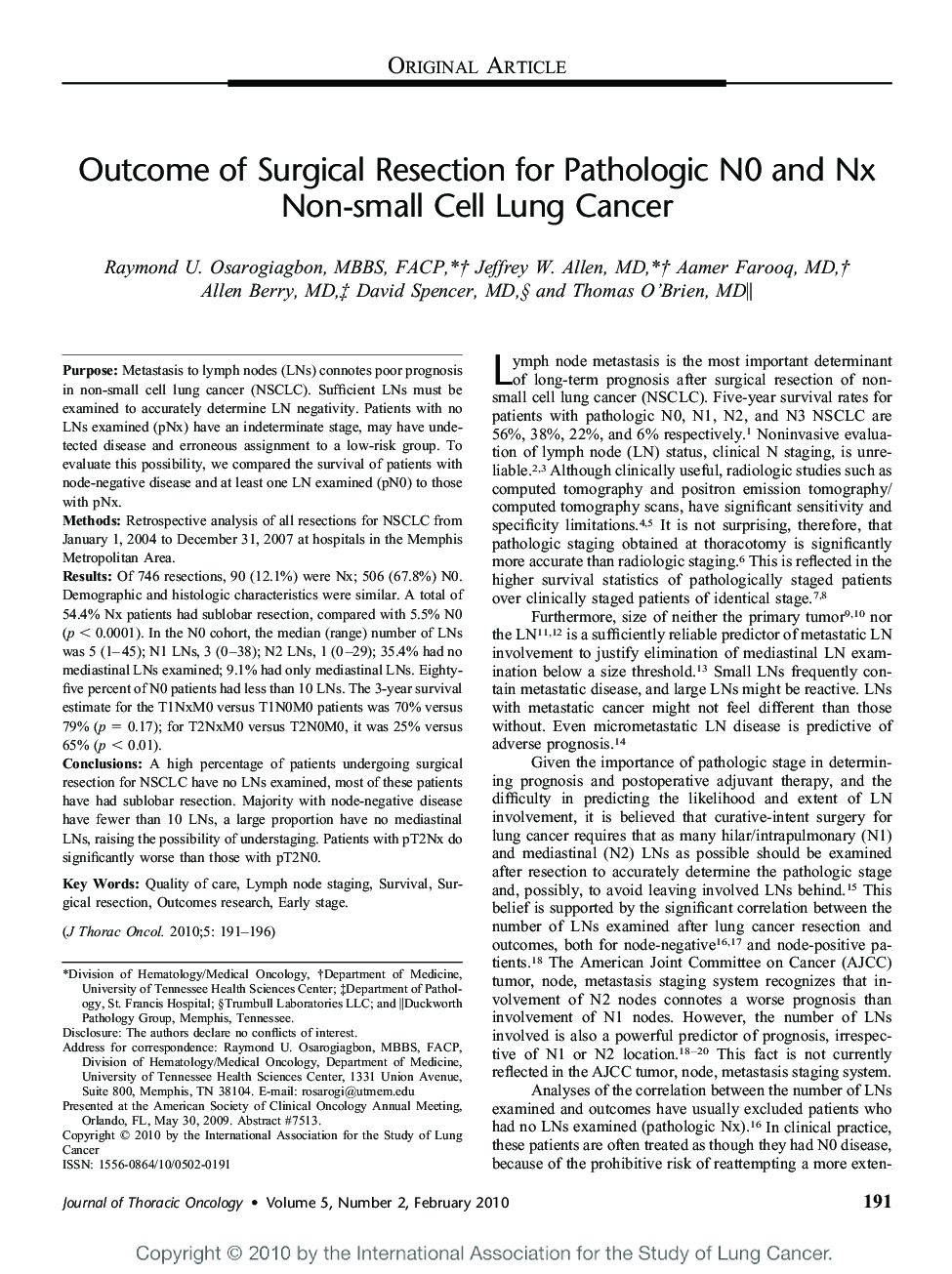| Article ID | Journal | Published Year | Pages | File Type |
|---|---|---|---|---|
| 3991047 | Journal of Thoracic Oncology | 2010 | 6 Pages |
PurposeMetastasis to lymph nodes (LNs) connotes poor prognosis in non-small cell lung cancer (NSCLC). Sufficient LNs must be examined to accurately determine LN negativity. Patients with no LNs examined (pNx) have an indeterminate stage, may have undetected disease and erroneous assignment to a low-risk group. To evaluate this possibility, we compared the survival of patients with node-negative disease and at least one LN examined (pN0) to those with pNx.MethodsRetrospective analysis of all resections for NSCLC from January 1, 2004 to December 31, 2007 at hospitals in the Memphis Metropolitan Area.ResultsOf 746 resections, 90 (12.1%) were Nx; 506 (67.8%) N0. Demographic and histologic characteristics were similar. A total of 54.4% Nx patients had sublobar resection, compared with 5.5% N0 (p < 0.0001). In the N0 cohort, the median (range) number of LNs was 5 (1-45); N1 LNs, 3 (0-38); N2 LNs, 1 (0-29); 35.4% had no mediastinal LNs examined; 9.1% had only mediastinal LNs. Eighty- five percent of N0 patients had less than 10 LNs. The 3-year survival estimate for the T1NxM0 versus T1N0M0 patients was 70% versus 79% (p = 0.17); for T2NxM0 versus T2N0M0, it was 25% versus 65% (p < 0.01).ConclusionsA high percentage of patients undergoing surgical resection for NSCLC have no LNs examined, most of these patients have had sublobar resection. Majority with node-negative disease have fewer than 10 LNs, a large proportion have no mediastinal LNs, raising the possibility of understaging. Patients with pT2Nx do significantly worse than those with pT2N0.
